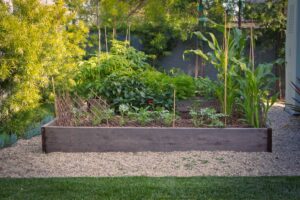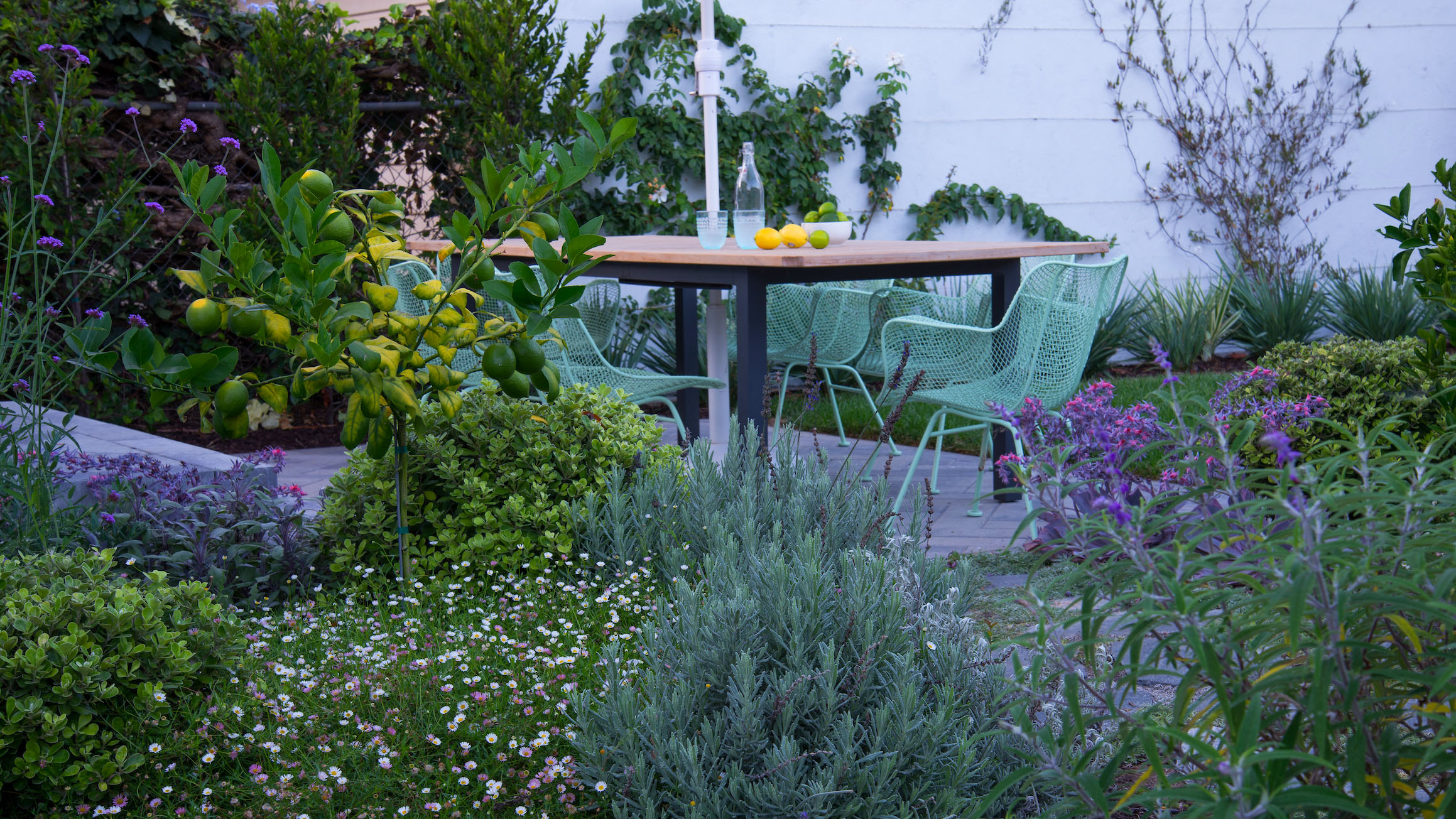Edible gardens play an essential role in improving local food security and lowering greenhouse gas emissions. By bringing fruits and vegetables straight from your garden to your plate or local community members’ tables, those same meals don’t have to travel the extra miles (as much as 1500 miles!) to get to there.
Additionally, the activity of gardening is incredibly healthy and therapeutic. While gardening can act as a terrific form of exercise, it also promotes mindfulness as it can calm your mind and ground you in the space around you.
The following are different ways edible gardens can be implemented in your landscape, no matter the size:
Start with Herbs
 An easy way to begin your edible garden is to plant a variety of herbs to enhance your meals and overall well-being. Many herbs, such as Sage, are native to California as well. If you’ve ever wanted to start cooking a lovely pot of pasta with some buttered sage, there is no better way than to start sourcing it from right outside your door. No more plastic containers from the grocery store, no more unused herbs going to waste.
An easy way to begin your edible garden is to plant a variety of herbs to enhance your meals and overall well-being. Many herbs, such as Sage, are native to California as well. If you’ve ever wanted to start cooking a lovely pot of pasta with some buttered sage, there is no better way than to start sourcing it from right outside your door. No more plastic containers from the grocery store, no more unused herbs going to waste.
Incorporate Citrus
 Incorporating citrus trees is another simple way to bring edible plants to your landscape. Citrus trees are wonderful for providing shade on a hot day and lemons to make spicy ginger tea when the weather becomes brisk. Other than lemons, there are a variety of oranges and grapefruits to choose from, coming in different sizes to accommodate your available space.
Incorporating citrus trees is another simple way to bring edible plants to your landscape. Citrus trees are wonderful for providing shade on a hot day and lemons to make spicy ginger tea when the weather becomes brisk. Other than lemons, there are a variety of oranges and grapefruits to choose from, coming in different sizes to accommodate your available space.
If you can’t find enough use for your newfound plethora of citrus by way of snacking cakes or lavender crinkle cookies, you can preserve them for later use (maybe with some roasted salmon!) or donate them. Endless Orchard has an ongoing global map of local fruit trees where you can list yours, encouraging those in your community to kindly pick before the seasons change and your fruit is no longer viable.
Raise Beds for a Garden to Grow
 Though planting a tomato vine here and a strawberry plant there are wonderful ways to start bringing in your favorite produce, raised vegetable beds may allow for the widest variety of edible plants. Navigating how to build and maintain a raised vegetable garden may feel overwhelming, but your landscape architect or designer can assist you each step of the way.
Though planting a tomato vine here and a strawberry plant there are wonderful ways to start bringing in your favorite produce, raised vegetable beds may allow for the widest variety of edible plants. Navigating how to build and maintain a raised vegetable garden may feel overwhelming, but your landscape architect or designer can assist you each step of the way.
If you simply cannot eat the abundance of kale fast enough, Food Forward will take your unwanted fruit and vegetables and donate all of it to hunger relief organizations across eight California counties, including Los Angeles and Ventura.
The varying forms of edible gardens make it a great choice for you and those around you, regardless of your space, time, or budget. If it’s really not possible for you, however, community gardens are a wonderful way to grow your goods in a designated plot. Refer to this list to find one near you.



